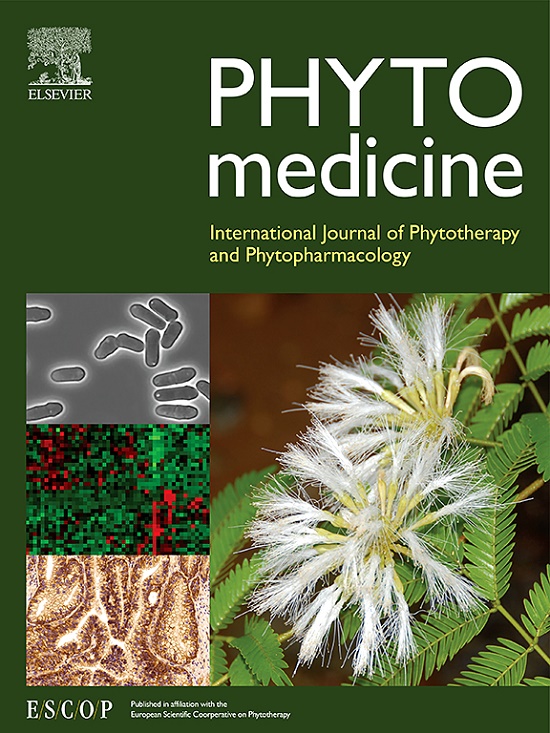Huang-Lian-Jie-Du decoction inhibits CD4+ T cell infiltration into CNS in MCAO rats by regulating BBB
IF 6.7
1区 医学
Q1 CHEMISTRY, MEDICINAL
引用次数: 0
Abstract
Background
Stroke, especially ischemic stroke (IS), represents a major global health challenge due to its high incidence, disability, mortality, recurrence, and economic impact. The limited therapeutic window for thrombolysis underscores the need for new treatments. The blood-brain barrier (BBB), which protects the brain, becomes compromised following ischemia-reperfusion injury, allowing peripheral immune cell infiltration and subsequent neuroinflammation. Huang-Lian-Jie-Du Decoction (HLJDT), a traditional formula with significant neuroprotective effects demonstrated in preliminary studies and literature reviews, has not yet been fully explored for its potential to inhibit peripheral immune cell infiltration through BBB protection.
Purpose
This study aims to: (1) Evaluate the efficacy of HLJDT in treating MCAO. (2) Observe the regulatory effect of HLJDT on the infiltration of CD4+ T cells into the central nervous system. (3) Investigate the effect of HLJDT on the Wnt/β-Catenin Signaling Pathway.
Methods
A focal MCAO reperfusion model will be used to evaluate HLJDT's effects on neurological function (Zea Longa and Garcia scores), infarction volume (TTC staining), and pathological changes (HE and NISSL staining). Immune-inflammatory responses will be assessed using ELISA for cytokines, flow cytometry for T lymphocyte distribution, and immunofluorescence staining for CD4+ T cell infiltration. The interaction of T cell antigens (LFA-1) and endothelial adhesion molecules (ICAM-1) will be studied with ELISA and immunofluorescence. BBB protection will be evaluated with Evans blue staining and transmission electron microscopy. Mechanisms of T cell infiltration will be examined using transmission electron microscopy and Western blotting (WB) for key proteins. Additionally, the impact of HLJDT on the Wnt/β-catenin pathway will be assessed with WB.
Results
HLJDT significantly improves neurological scores, reduces infarction volume, and mitigates pathological damage. It balances CD4+ T cell responses by inhibiting pro-inflammatory cytokines and enhancing anti-inflammatory ones, reducing CD4+ T cell CNS infiltration. HLJDT inhibits LFA-1/ICAM-1 interactions. It can also inhibit CD4+ T cell infiltration by repairing paracellular and transcellular structures of the BBB, with the Wnt/β-catenin signaling pathway playing a key role in this process.
Conclusion
We have innovatively demonstrated for the first time that HLJDT can regulate the balance between peripheral and central immune inflammation. It inhibits LFA-1/ICAM-1-mediated cell adhesion and, by modulating the Wnt/β-catenin pathway, improves the paracellular and transcellular structures of the blood-brain barrier, thereby suppressing CD4+ T cell infiltration and providing multifaceted protective effects for MCAO rats.

求助全文
约1分钟内获得全文
求助全文
来源期刊

Phytomedicine
医学-药学
CiteScore
10.30
自引率
5.10%
发文量
670
审稿时长
91 days
期刊介绍:
Phytomedicine is a therapy-oriented journal that publishes innovative studies on the efficacy, safety, quality, and mechanisms of action of specified plant extracts, phytopharmaceuticals, and their isolated constituents. This includes clinical, pharmacological, pharmacokinetic, and toxicological studies of herbal medicinal products, preparations, and purified compounds with defined and consistent quality, ensuring reproducible pharmacological activity. Founded in 1994, Phytomedicine aims to focus and stimulate research in this field and establish internationally accepted scientific standards for pharmacological studies, proof of clinical efficacy, and safety of phytomedicines.
 求助内容:
求助内容: 应助结果提醒方式:
应助结果提醒方式:


